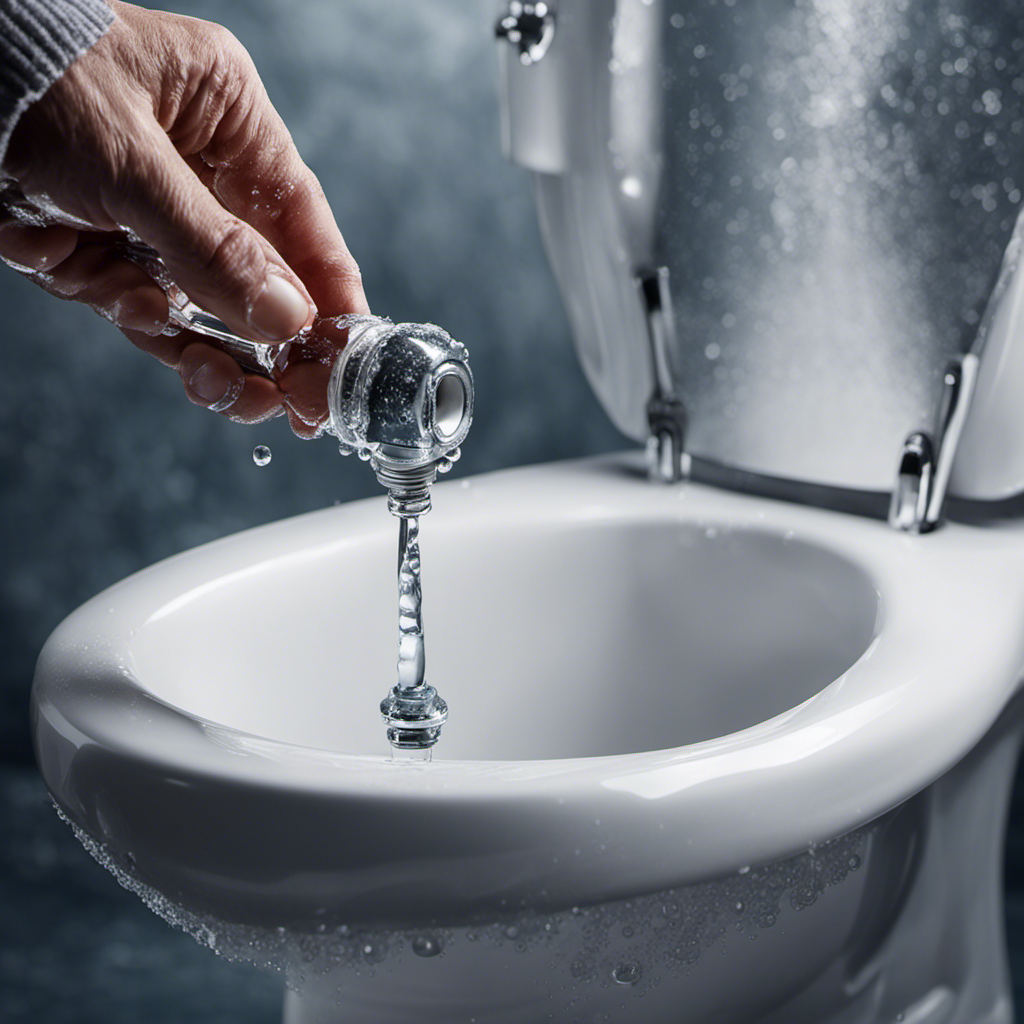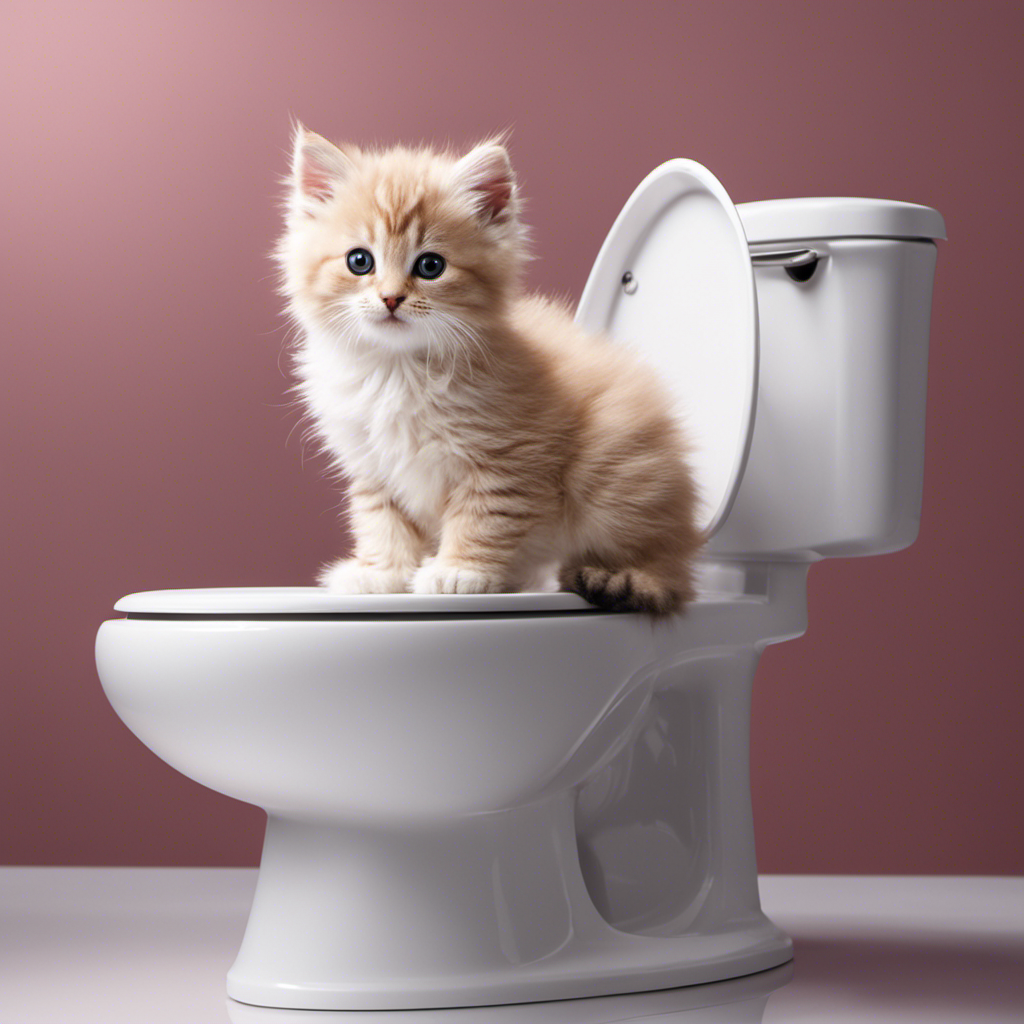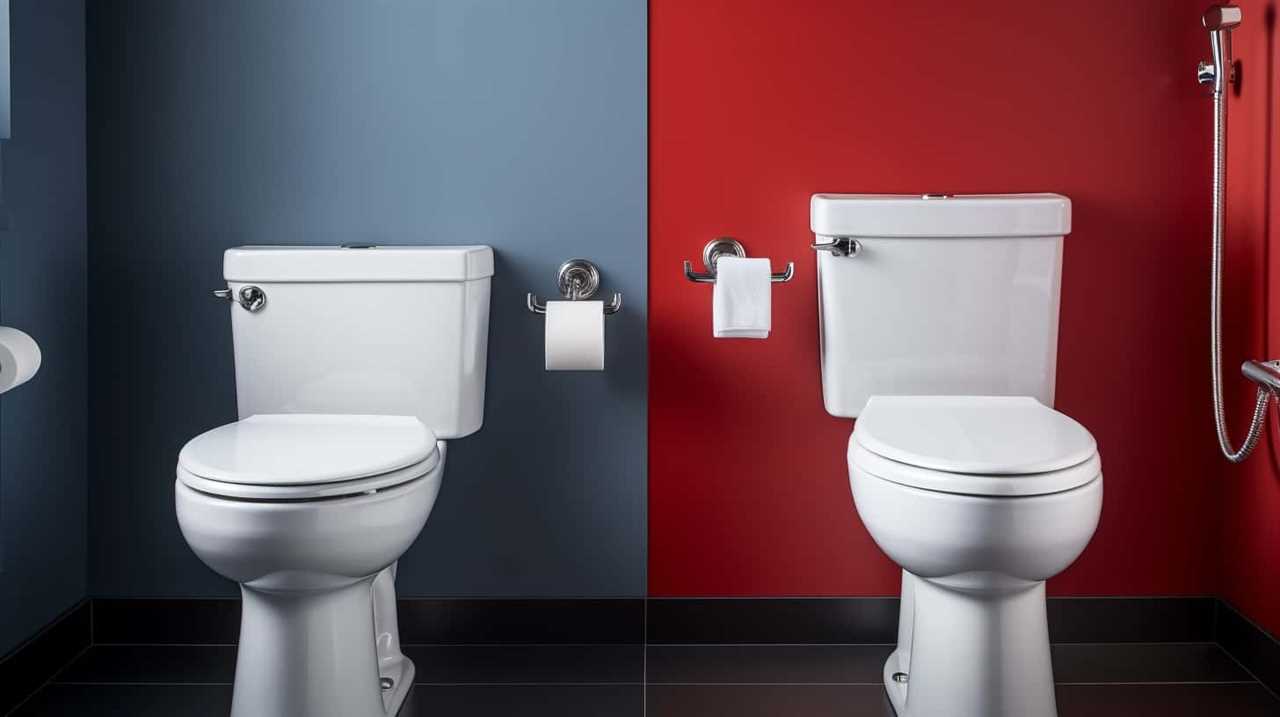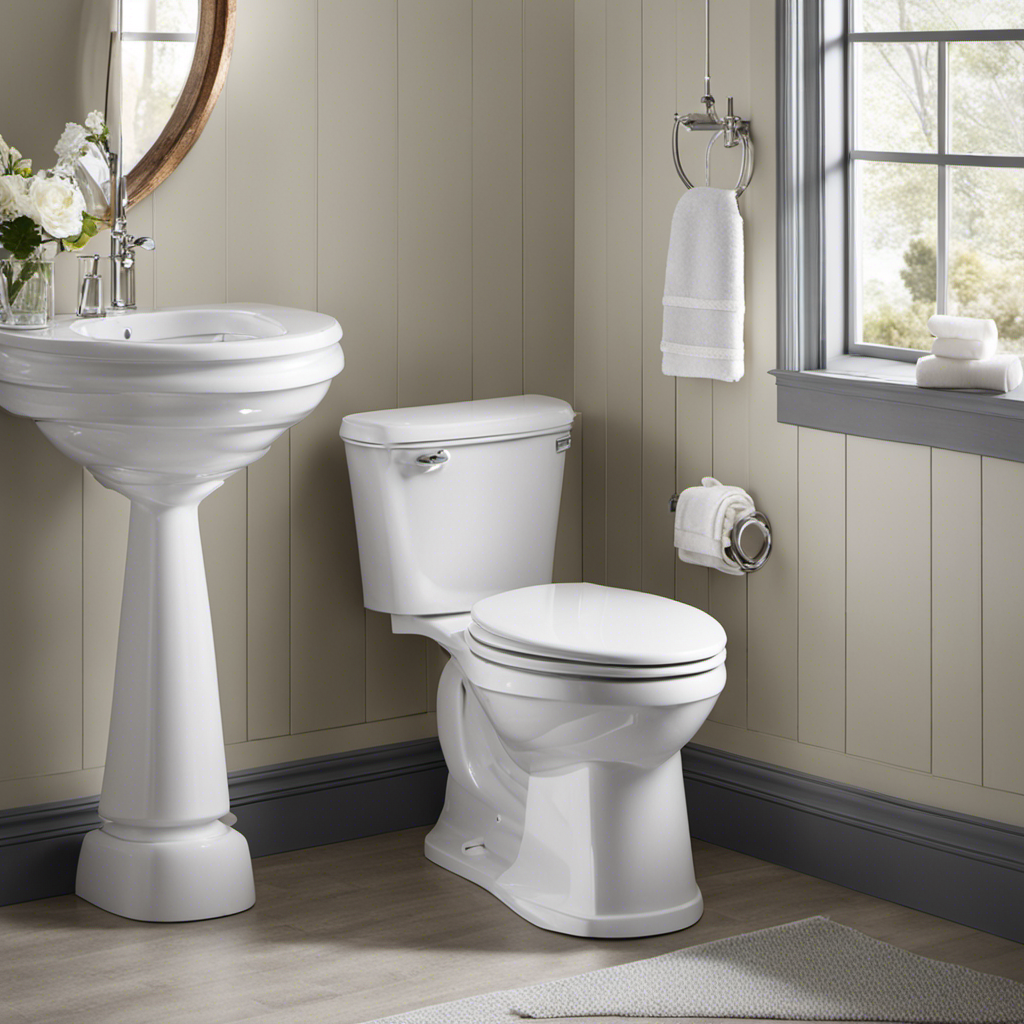Hey there, I’m here to help you troubleshoot your running toilet issue. If you’re tired of hearing that constant, irritating sound of water running, then you’ve come to the right place.
In this article, I’ll walk you through the common causes of a running toilet and show you how to identify the problem. We’ll dive into some simple do-it-yourself solutions that can put a stop to that wasteful water flow.
Plus, I’ll share some common mistakes to avoid and when it’s time to call in the professionals.
Let’s get started!
Key Takeaways
- The most common causes of a running toilet are a faulty flapper valve and a faulty or misadjusted fill valve.
- Some signs of a running toilet include a constant sound of water, water leaks into the bowl, water level fluctuations, high water bills, and visible water stains or puddles around the toilet.
- DIY solutions to stop a running toilet include adjusting or replacing the flapper, adjusting the float or replacing the fill valve, cleaning or replacing the fill valve, replacing the cracked overflow tube, and tightening or replacing the trip lever assembly.
- It is important to avoid flushing non-flushable items, ignoring small leaks, over-tightening bolts, using harsh chemicals, and neglecting regular toilet maintenance. If the issue persists or there are signs of more serious problems, it is recommended to call a professional.
Causes of a Running Toilet
To figure out the causes of a running toilet, you should first check the flapper valve and the fill valve. These two components are common culprits when it comes to toilet problems.
The flapper valve is responsible for sealing off the tank, while the fill valve controls the water flow. If the flapper valve is worn out or not sealing properly, it can cause water to continuously run into the bowl. Similarly, if the fill valve is faulty or not adjusted correctly, it can lead to water overflowing from the tank.
Troubleshooting a running toilet starts with inspecting these parts and ensuring they are in good working condition. If there are any issues, replacing them can usually solve the problem.
Identifying a Running Toilet
You can tell if your toilet is running by listening for a constant sound of water. A running toilet is not only annoying, but it can also waste a significant amount of water and increase your utility bills.
To help you identify if your toilet is running, here are some common signs and troubleshooting steps:
-
Constant sound of water: If you hear water running even when you haven’t flushed the toilet, it is a clear indication that your toilet is running.
-
Water leaks into the bowl: If you notice water continuously trickling into the toilet bowl, it means that the flapper valve, which controls the water flow, is not sealing properly.
-
Water level fluctuations: If the water level in the tank rises and falls on its own, it indicates a problem with the fill valve or the flapper valve.
-
High water bills: A sudden increase in your water bills without any other explanation could be a sign of a running toilet.
To troubleshoot a running toilet, you can try adjusting the water level, checking and replacing faulty valves, or seeking professional help if needed.
DIY Solutions to Stop a Running Toilet
If your toilet keeps making noise, there are several DIY solutions you can try to fix the issue. Troubleshooting toilets can be frustrating, but with a little know-how, you can save yourself time and money. Here are some common problems and their DIY solutions:
| Issue | DIY Solution |
|---|---|
| Faulty Flapper | Adjust or replace the flapper. |
| Water Level Too High | Adjust the float or replace the fill valve. |
| Fill Valve Malfunction | Clean or replace the fill valve. |
| Cracked Overflow Tube | Replace the overflow tube. |
| Loose or Worn Out Trip Lever | Tighten or replace the trip lever assembly. |
Common Mistakes to Avoid
When troubleshooting your toilet, be sure to avoid these common mistakes that can make the problem worse.
Proper toilet maintenance is essential to prevent water waste and avoid costly repairs.
Here are four common mistakes to avoid:
-
Flushing non-flushable items: Flushing items like baby wipes, cotton balls, or paper towels can clog the pipes and cause the toilet to run continuously.
-
Ignoring small leaks: Even a small leak can waste a significant amount of water over time. Fixing leaks promptly is crucial to preventing water waste.
-
Over-tightening bolts: When trying to fix a loose toilet, over-tightening the bolts can crack the toilet base. Tighten them just enough to secure the toilet without damaging it.
-
Using harsh chemicals: Harsh chemicals can damage the toilet’s components and cause more problems. Stick to using mild cleaners or natural solutions to maintain your toilet.
When to Call a Professional
Calling a professional is necessary if you are unable to fix the toilet issues on your own. While some toilet problems can be easily resolved with basic troubleshooting, there are certain signs that indicate a more serious issue that requires professional attention.
If you notice persistent leaks, constant clogs, or a foul odor coming from your toilet, it is best to seek the expertise of a professional plumber. Ignoring these signs can lead to more significant damage and potentially higher repair costs in the long run.
Professional repairs may vary in cost depending on the specific issue and the plumber’s rates. However, investing in professional repair ensures that the problem is correctly diagnosed and fixed, giving you peace of mind and a properly functioning toilet.
Frequently Asked Questions
Can a Running Toilet Cause a Higher Water Bill?
Yes, a running toilet can definitely cause a higher water bill. It continuously wastes water, leading to increased water usage and ultimately impacting the environment as well.
How Long Does It Usually Take to Fix a Running Toilet?
To repair a running toilet, first identify the common causes such as a faulty flapper or fill valve. Once identified, it usually takes about 30 minutes to fix, depending on the complexity of the issue.
Are There Any Health Risks Associated With a Running Toilet?
Running toilets can cause health risks and increase water consumption. For instance, a constant flow of water can create a breeding ground for bacteria and mold. Additionally, the wasted water can lead to higher utility bills and environmental concerns.
Can a Running Toilet Damage the Plumbing System?
Yes, a running toilet can damage the plumbing system. It can lead to increased water bills and potential leaks. Regular plumbing maintenance is important to prevent and address this issue. Here are some troubleshooting tips.
What Are the Signs of a Running Toilet That May Not Be Immediately Noticeable?
Hidden signs of a running toilet can include faint hissing sounds and constantly moving water in the bowl. To prevent this, check for leaks, ensure the flapper is sealing properly, and adjust the fill valve if necessary.
Conclusion
In conclusion, stopping water from running in a toilet is a common household problem that can be easily resolved with the right knowledge and tools.
By identifying the causes and implementing DIY solutions, such as adjusting the flapper or replacing the fill valve, you can save water and prevent annoying noises.
However, it’s important to avoid common mistakes like overtightening or using the wrong parts.
If all else fails, don’t hesitate to call a professional for expert assistance.
Remember, with a little effort, you can conquer the running toilet like a superhero taming a wild waterfall.










